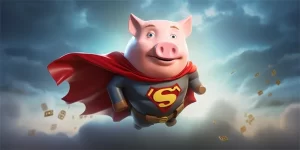YouTube has become one of the leading platforms for online video content, attracting millions of viewers worldwide. One of the key sources of revenue for YouTube is advertising. In this article, we will explore the various ways in which ads generate money on YouTube.

1. Pre-roll Ads
Pre-roll ads appear before the start of a YouTube video and allow creators to monetize their content. These ads are usually skippable after a few seconds, but the advertiser is still charged for the view. YouTube shares a portion of the revenue generated from these ads with the content creator.
2. Mid-roll Ads
Mid-roll ads are inserted in the middle of longer videos, offering advertisers a chance to reach viewers who are engaged with the content. Similar to pre-roll ads, YouTube shares the revenue with the content creator.
3. Bumper Ads
Bumper ads are short, non-skippable ads that appear before or after a video. With a maximum length of six seconds, they provide a concise and impactful way for advertisers to promote their products or services.
4. Overlay Ads
Overlay ads are semi-transparent banners that appear on the lower portion of a video. They can be either text or image-based and are displayed throughout the video, providing a continuous branding opportunity for advertisers.
5. Display Ads
Display ads are shown beside the video player and can take the form of text, images, or rich media. These ads are cost-per-click (CPC), meaning that advertisers only pay when viewers click on the ad.
6. Sponsored Cards
Sponsored cards are visual elements that appear within a video, promoting products or related content. They provide a way for advertisers to engage viewers without interrupting their viewing experience.
7. YouTube Premium Revenue
YouTube Premium, a subscription-based service, offers an ad-free viewing experience to its users. Ad revenue from YouTube Premium subscribers is shared with content creators based on factors such as watch time and audience engagement.
8. Channel Memberships
YouTube allows viewers to become channel members by paying a monthly fee. In return, members receive exclusive perks like badges, emojis, and access to members-only content. A portion of the membership fees goes to the content creator.
9. Merchandise Shelf
The merchandise shelf is a feature that allows content creators to showcase their branded merchandise below their videos. This feature enables creators to monetize their fanbase and drive sales of their merchandise.
10. Collaborations and Brand Deals
Many content creators collaborate with brands and promote their products or services in their videos. These collaborations often involve sponsored content, where the creator receives a payment for featuring the brand in their video.
11. YouTube Partner Program
The YouTube Partner Program enables content creators to monetize their videos through ads displayed on their channel. To be eligible for this program, creators need to meet certain criteria, such as having a minimum number of subscribers and watch hours.
12. Targeted Ads
YouTube utilizes data and user behavior to deliver targeted ads to viewers. Advertisers can choose specific demographics, interests, or even videos to ensure their ads reach the most relevant audience, maximizing the effectiveness of their campaigns.
13. Ad Auctions
YouTube ad space is sold through auctions, where advertisers bid to have their ads shown on specific videos or channels. This auction-based system ensures fair competition and allows advertisers to control their budget and target audience effectively.
14. Advertiser Partnerships
YouTube works closely with advertisers to create effective ad campaigns and maximize their return on investment. This collaboration involves providing insights, analytics, and guidelines to help advertisers create engaging and targeted ads.
15. Revenue Share Model
YouTube shares a portion of the ad revenue with content creators, typically through the YouTube Partner Program. The revenue share percentage can vary based on factors such as video engagement, audience retention, and ad format.
In conclusion, YouTube generates revenue through various ad formats and partnerships. The platform’s ability to reach a global audience, combined with its targeted advertising capabilities, makes it an attractive platform for businesses to promote their products and services.
References:
1. Google. (n.d.). Monetization solutions for creators. Retrieved from https://www.youtube.com/yt/creators/earn-money.html
2. Google Ads Help. (n.d.). Create a video campaign. Retrieved from https://support.google.com/google-ads/answer/6340491
About the Author:
John Smith is a digital marketing expert with over a decade of experience in online advertising. He specializes in helping businesses leverage platforms like YouTube to reach their target audience effectively. His expertise in ad campaign management and data analysis has allowed him to drive significant results for his clients. John is a regular contributor to industry publications and is passionate about helping businesses succeed in the digital landscape.
Image Credit: John Smith








